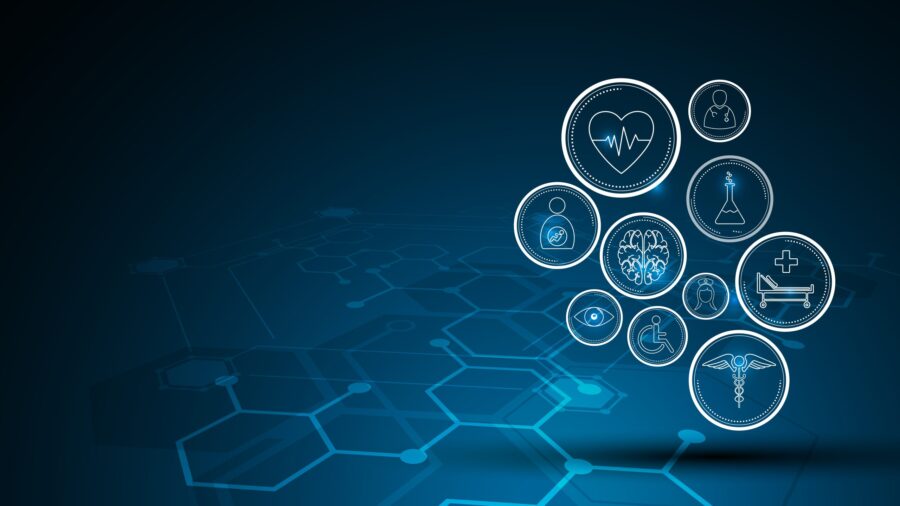
Three years after the outbreak of the COVID-19 pandemic, the lingering impacts of the viral outbreak and the risk of another deadly pathogen spreading around the world remain. The pandemic challenged every health system in the world, stressing facilities, medical equipment suppliers, and medical personnel. Public health authorities tracked disease transmission, modeled forecasts across multiple waves of the pandemic, and distributed available vaccines. In the United States, the virus also put a significant drain on many facets of the country’s budget, especially the budgets for Medicare and Medicaid programs.
The role of health and clinical informatics was critical in the system’s response to the pandemic. Informatics, along with machine learning (ML) models and artificial intelligence (AI), show tremendous potential. The pandemic underscored the opportunity and importance of the informatics discipline, as demonstrated by the widespread utilization of health informatics applications like telehealth, remote patient monitoring, patient engagement, AI-based drug discovery, precision medicine, and clinical decision support. To better respond to a similar or worse event in the future, countries must ensure that they are better prepared to deal with pandemics with a foundation in sound data collection, analysis, and more effective decision-making.
The Role of Healthcare Informatics
Healthcare informatics is the analysis of health and clinical data to deliver better care to patients and plays an important role in interconnecting hospitals, insurance providers, doctors, and the government. Informatics is becoming more integrated into various aspects of the healthcare industry, from electronic health records to tracking resources across provider networks.
Healthcare informatics allows organizations and providers to analyze and manage health records to better understand disease spread and patient numbers. Also, it enables hospitals and pharmacies to identify patterns to anticipate and address supply demands, ensuring they are better prepared for healthcare crises. Further, informatics plays a significant role in supporting the growing demand for telemedicine, for example, by developing programs and software and providing secure access to health information and records. In addition, as AI and ML grow more ubiquitous, informatics will leverage these tools for more significant forecasting, preparation, and resource distribution to better understand health trends and provide support during healthcare disasters.
Informatics During the COVID-19 Pandemic
The field of health and clinical informatics contributed to meeting the challenges posed by the COVID-19 pandemic. Informatics helped healthcare providers follow state and federal protocols, conduct data analysis, and interconnect different organizations and systems for years, but during the pandemic providers and government organizations were also able to identify and monitor the spread of different variants of the virus and track common symptoms at the local, state, and national level.
By connecting different healthcare companies and government agencies, informatics enabled these organizations to share resources and data. In the early months of the pandemic, for example, ventilators, oxygen, and personal protective equipment (PPE) were in short supply; healthcare informatics allowed different hospitals to share resources as needed by identifying supply and demand more quickly.
Informatics also assisted public health communication through information portals that tracked and shared information daily information about case numbers, testing rates, and vaccine rollouts. Aspects of informatics are seen in care today and range from submitting an insurance claim to a provider’s ability to view the patient’s symptoms or disease in a larger context by connecting with other organizations.
Machine Learning and Artificial Intelligence
The goal of each healthcare organization is to use its raw data for forecasting. To make meaningful predictions, it is vital for data to be first cleaned and processed. This is where ML and AI shine. When trained properly on their use, providers can leverage ML and AI to sort through the data they collect. Each company and organization’s immense troves of data are in raw format and, to be of use, it must be cleaned up and sorted, which is an immense task for a human. With the help of technologies like AI and ML, faster, more accurate. and large-scale data processing is possible.
Some of the most exciting impacts of these tools are the ability to generate better predictions and identify new methods of diagnosis, and the COVID-19 pandemic offered a testing ground for these applications. In early February 2020, with the COVID-19 pandemic just starting to make global waves, engineers at MIT began using data on the virus’ spread and implemented a ML algorithm to predict when infection rates would drop in different countries, based on that country’s quarantine protocols. Other researchers associated with MIT developed an AI model able to identify asymptomatic COVID-19 patients from healthy individuals through forced-cough recordings with 98.5 percent accuracy. The model was trained using thousands of samples of both speech and forced coughs.
To unlock the full potential of AI and ML, it’s important to remember that they are technical tools requiring domain-level knowledge. Depending on the challenges these tools are applied to, it is essential for doctors and nurses, insurance professionals, and those familiar with healthcare’s complex set of regulations to partner with healthcare informatics specialists familiar with the technical aspects of these tools.
Preparing for the Next Pandemic
In the face of a global health crisis, it is vital for the healthcare industry to respond quickly. Healthcare and clinical informatics help organizations manage and process their data ahead of health crises. When powered by ML and AI, informatics can quickly and accurately generate models to help professionals understand the disease, make informed decisions, and act swiftly in line with state and federal governments. Communication is key during a global pandemic, and informatics can facilitate this by sharing data with other organizations, regulatory or government bodies, and the public in a timely manner.
Still, without alignment between state and federal regulations, the industry response will remain limited. Variations in the protocols and rules between states and federal Medicare and Medicaid programs, for example, can be an impediment to interconnecting different agencies and organizations with health informatics. An article published in the Journal of American Medical Informatics Association argues that current regulations require modernization to eliminate conflict at the federal and state levels and suggests changes to HIPAA could facilitate better communication among healthcare organizations. Finally, given the potential benefits AI and ML can provide, organizations should begin leveraging these tools now, rather than trying to catch up when the next health crisis arrives. Pairing technical expertise and domain-level knowledge will enable organizations to make full use of these technologies, so they should invest time and resources in recruiting the right people.
While the COVID-19 public health crisis is ending in the United States, future pandemics are inevitable. The level at which governments and healthcare organizations are prepared to respond to these threats is key to managing the spread of disease, reducing loss of life, and minimizing long-term economic and health impacts for millions of people around the world. Clinical and health informatics played a critical role in the healthcare industry’s response to COVID-19, in part due to the expansion of technologies like telemedicine, AI, and ML. Data and how it is used are at the heart of modern healthcare, and investing now in informatics and analytics could make all the difference in the next pandemic.
About the Author:

Bhavini Kaneria is a senior analytics manager and leader in informatics, machine learning, and artificial intelligence. Bhavini has worked extensively on different campaigns in Medicare, Medicaid, Dual Eligible Special Needs Plans, and Community Care. In early 2020, Bhavini created an algorithm to track COVID-19 spread in different communities and identify the effects of the virus on members with chronic conditions, providing this data to DHS weekly. Bhavini holds an MBA from Middlesex University, U.K., and an MS from Virginia Commonwealth University, U.S. For more information, contact [email protected].
